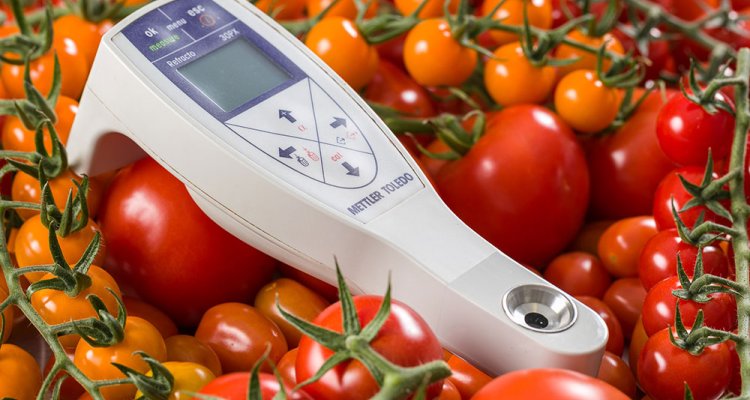Flavour models have been developed by the experts of business unit Greenhouse Horticulture of Wageningen University & Research to quickly screen the flavour level of fruits. So far flavour models have been developed for tomato, strawberry, bell pepper and Galia melon.
After long tasting sessions the assessors of consumer panels may become less motivated to participate. Long sessions or too many sessions in a week may produce noise in the data. We allow our panels to taste only a limited amount of products per session or per week, but some of our customers may have up to 150 different samples for a simultaneous flavour evaluation. To accommodate for such market demands, methods (flavour models) have been developed for several crops to predict the outcome of a consumer panel evaluation by means of a combination of instrumental measurements. A flavour model will never be able to entirely replace a panel, but it does offer the opportunity to quickly screen products on flavour level on a large scale.
Four flavour model are currently in use. Our expertise enables us to develop new flavour models for other products. Please contact us when you are interested in this subject.
The tomato flavour model uses instrumental input parameters for sensory attributes and calculates the liking on a 0 – 100 scale with a certainty of 86%. The model does not use concentrations of aromatic compounds, but instead uses the correlation between the attributes ‘sweetness’ and ‘aromatic’, and also incorporates texture attributes. Although the model is not able to replace a panel, it does offer the opportunity to collect flavour data on a large scale. This might be helpful in gaining a clear picture on variety and seasonal differences, or to monitor flavour levels in breeding programmes. The tomato flavour model has been in use since 2001 and is regularly validated. It has become the standard tool in the horticultural sector to communicate on tomato flavour levels.
The strawberry flavour model uses instrumental input parameters for sensory attributes and calculates the liking on a 0 – 100 scale with a certainty of 76%. One of the attributes is refraction (°Brix), but also several other parameters are incorporated in the model. Although the panel is not able to replace a panel, it does offer the opportunity to collect flavour data on a large scale. This might be helpful in gaining a clear picture on variety and seasonal differences, or to monitor flavour levels in breeding programmes. Only a limited amount of fruits is needed, which is convenient in early stages of a breeding programme. The strawberry flavour model has been in use since 2017 and is developed in corporation with the Dutch government and a breeding company.
The bell pepper flavour model uses instrumental input parameters for sensory attributes and calculates the liking on a 0 – 100 scale with a certainty of 86%. It takes refraction (°Brix) and several other parameters into account. Although the panel is not able to replace a panel, it does offer the opportunity to collect flavour data on a large scale. This might be helpful in gaining a clear picture on variety and seasonal differences, or to monitor flavour levels in breeding programmes. The tomato flavour model has been in use since 2015 and is developed in corporation with the Dutch government and several breeding companies.
The Galia melon flavour model uses instrumental input parameters for sensory attributes and calculates the liking on a 0 – 100 scale with a certainty of 87%. The model incorporates textural attributes along with several other parameters. Although the panel is not able to replace a panel, it does offer the opportunity to collect flavour data on a large scale. This might be helpful in gaining a clear picture on variety and seasonal differences, or to monitor flavour levels in breeding programmes. The Galia melon flavour model has been in use since 2015 and has been developed in corporation with the Dutch government and several (breeding) companies.
